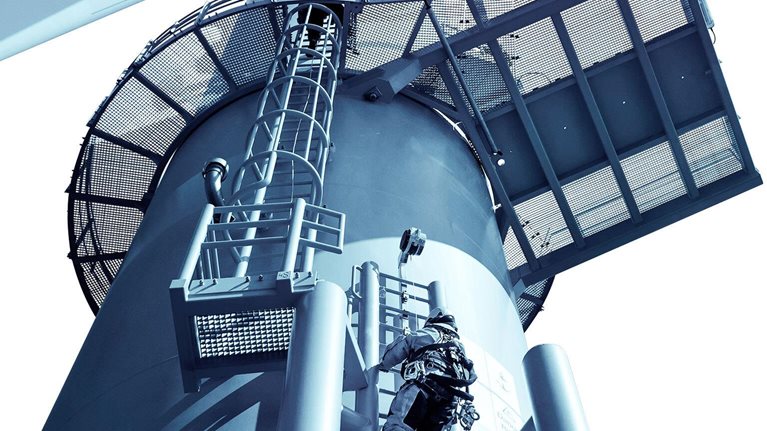Reducing carbon emissions will provide enormous economic and health benefits across industries and societies, improve sustainability, and help preserve the planet’s habitability for future generations. Because the aviation industry must play a major role in this transformation, the World Economic Forum launched the Clean Skies for Tomorrow (CST) initiative in 2019. The CST public–private partnership works closely with stakeholders across industry, government, and civil society to help the aviation industry use sustainable aviation fuels (SAFs) and other clean propulsion technologies to transition to net-zero emissions by 2050.
The CST initiative, which receives support from the Mission Possible Partnership, involves almost 100 organizations, including leading airlines, airports, fuel suppliers, aircraft manufacturers, frequent corporate fliers, and freight forwarders. Many of these organizations have committed to accelerating the use of SAF to meet 10 percent of global aviation fuel demand by 2030 and reach the net-zero goal by 2050. While this momentum is encouraging, major new commitments, investments, and innovation are necessary to reduce carbon emissions significantly.
McKinsey and the World Economic Forum have developed a joint report that focuses on power-to-liquid (PtL) fuel, which is produced from captured CO2 and renewable electricity from wind, solar, nuclear, hydropower, and other green sources. The report, Clean skies for tomorrow: Delivering on the global power-to-liquid ambition, makes the case for using PtL fuel to reduce aviation emissions, describes strategies for overcoming complex technical and operational production challenges, and outlines actions that could help scale PtL regionally and globally.
Benefits and challenges of the PtL pathway
Producing PtL requires several steps: creating renewable electricity and hydrogen, capturing carbon, and synthesizing fuel. Given the nascency of the PtL value chain and the complexity of constructing it, no mature, fully integrated PtL player is yet operating at scale. Increasing PtL production would require several major changes, as shown in Exhibit 1, but achieving this goal would significantly diversify and expand SAF supply to meet future demand.

Greatly expanding production of low-cost renewable energy
Optimizing the location and design of PtL production facilities is key to reducing its cost. Fortunately, PtL can be produced far from major electric grids. Typical PtL providers are likely to build large-scale renewable-electricity production sites to ensure a continuous supply of hydrogen. A successful system must gather and store enough power to use when the sun isn’t shining or the wind isn’t blowing. This power probably will be stored in the form of hydrogen, at least until battery technology improves enough to reduce costs. Strategies such as combining wind and solar and tapping small amounts of grid energy (where applicable and, ideally, clean) can stabilize generation and reduce costs. Building solar developments in sparsely populated, nonarable regions on just 1 to 2 percent of desert land would provide enough PtL fuel to decarbonize the entire aviation sector by 2030.
Producing low-cost clean hydrogen on-site or close to fuel synthesis facilities
Advances in low-carbon and renewable hydrogen production also will be crucial to the maturity of the PtL value chain. Lowering the levelized cost of hydrogen (which includes renewable-electricity input but excludes transport and distribution) to less than $1 per kilogram would reduce the cost of PtL to $1,200 to $1,800 per ton, depending on the carbon source, amounting to a 40 percent reduction in average cost by 2030. While this cost is still higher than that of fossil jet fuel, it is within range of alternative SAFs. Low-carbon hydrogen, sometimes referred to as “blue,” is derived primarily from natural gas using carbon capture and storage, while renewable or “green” hydrogen is made with renewable electricity. Low-carbon hydrogen is more cost-competitive than renewable hydrogen today and can be used as a transition technology to scale PtL faster. Although low-carbon hydrogen has lower production costs, it requires capturing CO2 twice to produce PtL—once in the hydrogen production route and again in the fuel synthesis step. Since this is an inherently inefficient system, renewable hydrogen can be prioritized for PtL production over the long term.
Capturing or supplying sufficient sustainable carbon
Industrial facilities that generate CO2 from fossil sources will be useful in the short term when generating PtL. Over the long term, however, they can be replaced by streams of biogenic carbon from waste and sustainable biomass. When the technology matures, direct air capture (DAC) can provide unlimited CO2 and entirely close the carbon loop. Unlocking the potential of DAC will require a number of advances, including innovative carbon monetization, strategic funding and investment partnerships, accelerated technology scaling, and new regulatory incentives. Although small-scale players are currently pursuing DAC technology, it could take more than a decade before enough air-sourced CO2 is available for at-scale synthetic fuel production. In the meantime, many biogenic plants will be needed to scale PtL jet fuel production.
Optimizing fuel synthesis for efficiency
PtL fuels are created in two primary pathways: fuel synthesis and methanol to jet. Both require a first step to create synthesis gas, or “syngas,” which is primarily a mixture of carbon monoxide and hydrogen. Syngas can be produced using either co-electrolysis or reverse water gas shift (RWGS). The co-electrolysis step eliminates the discrete production of hydrogen and creates syngas in a single step, whereas RWGS requires renewable or low-carbon hydrogen as a precursor to syngas generation. If co-electrolysis can mature as a syngas-generation step, it will have several advantages over RWGS, including lower levelized fuel production costs due to capital cost savings from the combined hydrogen and syngas production steps. Co-electrolysis is potentially a more efficient process due to heat recovery and integration with the fuel synthesis step. Beyond these two methods, several companies are experimenting with novel and potentially groundbreaking technologies.
Balancing the relative proportions of output products to commercialize the by-products of jet fuel
By-products of PtL will help decarbonize other applications besides aviation. For instance, trucking fleets around the world can use synthetic diesel from the PtL process as a sustainable substitute. Balancing the output ratio of PtL and other by-products can maximize the commercial value of PtL facilities. At present, companies have few near-term regulatory incentives to produce PtL jet fuel. As demand shifts and legislation is enacted to support aviation decarbonization, players will need to shift production from diesel and petrol fuels to kerosene, taking care not to leave road transport applications short of low-carbon fuel.
How PtL production could scale by 2050
Work is under way to understand how the aviation industry can achieve its sustainability ambitions as annual jet fuel demand rises toward 500 million metric tons (Mt) in 2050. Demand for PtL is estimated to be in the range of 140 to 280 Mt that year (Exhibit 2). Meeting future demand for SAF almost certainly will require a mix of production technologies, such as hydrotreated esters and fatty acids, in addition to PtL.

Rapid R&D is required both now and in the coming years, along with faster-than-anticipated cost declines for renewable electricity, to reduce PtL input costs to lower than $15 to $20 per megawatt-hour. Annual PtL jet fuel production will need to rise from the roughly 100,000 tons of capacity announced through 2025 to ten million to 105 million tons by 2035, a potential thousandfold increase in ten years. Substantial capital will be required to meet PtL demand—potentially, a cumulative total of $3 trillion to $4 trillion between 2022 and 2050. The capital intensity of PtL means investors will need to play a significant role in production expansion.
Each region will play a unique role in scaling PtL. In the near term, while DAC is still subscale, regions with high biogenic carbon will have an outsize role in satisfying global PtL demand. Regions with concentrated point-source emissions should act now to lock in access for PtL producers. Brazil, Chile, and Uruguay, as well as regions in North America, Northern Europe, and China, stand out as potential early adopters.
The signposts of progress
The first priorities for scaling PtL are lowering the cost of renewable hydrogen and collecting enough carbon, first from biogenic and industry point sources and eventually from DAC, to achieve near-zero net carbon emissions. There are three main milestones to watch for on the road to scaling PtL to the required volumes by 2050:
- Renewable-electricity cost reductions of about 30 percent, achieved through additional scaling and greater efficiencies
- wider commercial availability of high-efficiency PtL technology, leading to cost reductions of about 50 percent
- efficient DAC of carbon, resulting in 50 to 80 percent cost reductions
Even with the aforementioned cost reductions, PtL, like other forms of SAF, likely will remain more expensive than conventional jet fuel in the decades to come, so market-based interventions and policies that help bridge this cost differential will be essential to reach net zero by 2050.
Download the full report on which this article is based, Clean skies for tomorrow: Delivering on the global power-to-liquid ambition (PDF-6.90 MB).

